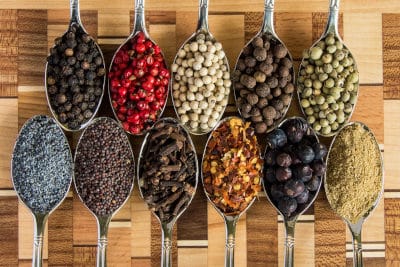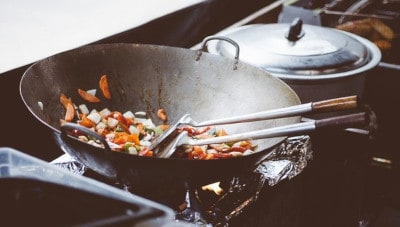China’s exciting street food scene is more than just a feast for the senses; it’s a window into the country’s rich culinary past, with each dish revealing regional histories, family traditions, and a passion for fresh, robust tastes. From busy morning markets to exciting night bazaars, Chinese street food highlights the country’s variety by offering bite-sized experiences that embody the essence of each location. This culinary tour will cover the must-try street foods in China and offer advice on how to enjoy each dish like a native.
China’s street food culture has long been praised for its innovation and accessibility. Many traditional street cuisines evolved out of necessity, created by creative street sellers and travelers looking for quick, tasty meals on the go. Over time, this dynamic tradition evolved into a key aspect of daily life, with dishes passed down through generations, each adding their own unique twist.
Today, there is something for everyone among China’s street food offerings, whether you’re in the mood for a spicy morning wrap, a fermented tofu snack, or the comforting taste of hot pot eaten outside.
Throughout this journey, we’ll dive into some of the most iconic street foods, uncovering what makes each one unique, from jianbing, China’s favorite breakfast crepe, to the bold flavors of chòu dòufu (stinky tofu), a daring dish that both intrigues and delights. We’ll also touch on the etiquette and must-see locations, especially the night markets that become hubs of street food culture after sundown.
Ready to dive in? First, let’s explore jianbing—the crepe that powers mornings across China.
Jianbing: China’s Savory Breakfast Crepe
Jianbing is one of China’s most beloved breakfast staples—a satisfying, flavorful crepe that can be found at nearly every street corner in bustling cities and quiet towns alike. Thought to have originated in Northern China, jianbing has roots in Shandong province, where it was reportedly first made as a nutritious, portable meal for soldiers. Today, it’s a breakfast icon, offering a savory, crunchy bite that’s perfect for a busy morning.
The Origin and History of Jianbing
Jianbing dates back nearly two thousand years, with legends tracing it to the Han Dynasty (206 BC–220 AD). According to lore, a general whose troops lost their cooking equipment instructed his soldiers to cook a thin batter on flat griddles, creating the first version of jianbing.
Over centuries, the dish spread across China, adapting to regional ingredients and flavors. From Shandong to Beijing, jianbing became not just a meal but a ritual that begins many people’s day with a warm, filling breakfast crafted by skilled street vendors.
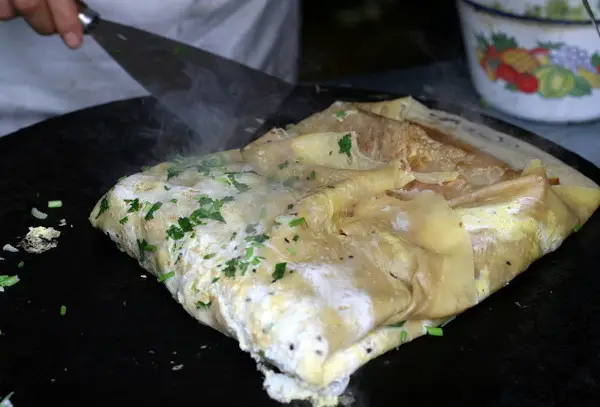
Popular Variations and Regional Twists
Jianbing’s popularity has led to many local twists, with each region putting its own stamp on the classic recipe. The most traditional version, jianbing guozi, typically includes a crispy fried dough stick, or youtiao, wrapped inside the crepe. In Northern China, a mix of bean pastes, fresh herbs, and green onions is added, giving it a signature umami-rich taste.
In cities like Beijing and Tianjin, you’ll find jianbing filled with crunchy fried wonton crackers for added texture. Some regions add pickled vegetables, sliced pork, or even egg crepes layered within the jianbing, catering to those with bigger appetites. Meanwhile, in Southern China, the flavor profile leans slightly sweeter, often with a dash of hoisin or sweet bean sauce. These variations reflect the diverse ingredients available across regions and the local tastes that make each bite unique.
How to Make Jianbing at Home
Making jianbing at home is rewarding and surprisingly simple with a little practice. Here’s a breakdown of the essential ingredients and steps for achieving that authentic taste and texture.
Ingredients and Step-by-Step Preparation
Ingredients:
- Batter: 1 cup mung bean flour (or a mixture of all-purpose flour and rice flour), 1 cup water, pinch of salt
- Toppings: 1 egg, 1 tablespoon hoisin sauce, 1 tablespoon chili sauce, 2-3 green onions (chopped)
- Filling: 1 youtiao or 2 wonton crackers (substitute with crunchy lettuce or crackers for a lighter version)
- Optional Add-ins: cilantro, pickled radish, sesame seeds
Instructions:
- Prepare the Batter: In a mixing bowl, combine mung bean flour (or the flour mixture) with water and salt, stirring until smooth. The batter should be thin enough to spread easily but thick enough to coat the pan.
- Heat the Pan: Heat a nonstick pan over medium-high heat. Pour a ladle of batter onto the pan, spreading it thinly in a circular motion.
- Add the Egg: Crack an egg over the batter and spread it evenly, allowing it to cook until it forms a light layer on the crepe.
- Add Sauces and Toppings: Spread hoisin and chili sauce over the egg layer, then sprinkle chopped green onions and optional sesame seeds.
- Add Crunchy Elements: Place a youtiao or crispy wonton crackers in the center, folding the sides of the crepe over the filling.
- Serve: Slice and serve hot. Enjoy your homemade jianbing as is or add extra chili sauce for a spicier kick.
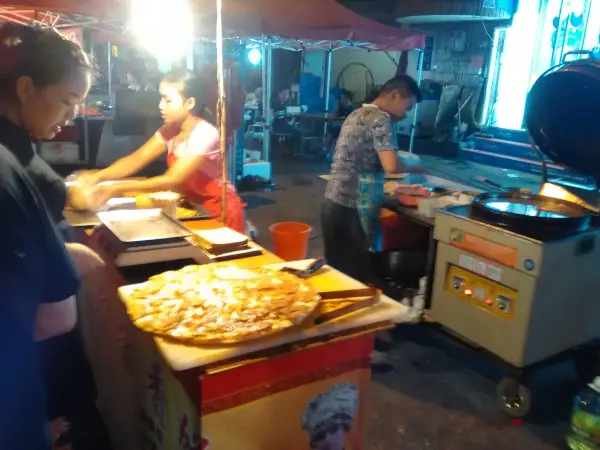
Tips for Achieving the Perfect Texture and Flavor
- Use a Hot Pan: Jianbing needs a consistently hot pan to cook evenly and get that light, crispy edge.
- Perfect the Batter: If it’s too thick, the crepe will be chewy instead of light. Adjust the water as needed to get the right spreadable consistency.
- Balance the Sauces: Hoisin brings a subtle sweetness, while chili sauce adds heat. Adjust based on your taste preference.
- Get Creative with Fillings: If youtiao isn’t available, use anything crunchy for texture, like sliced cucumber or even crushed crackers.
Where to Find the Best Jianbing
Street Vendors in China
For an authentic jianbing experience, head to the bustling morning markets of Beijing, Shanghai, or Xi’an, where street vendors expertly craft these crepes on hot griddles. Watching a vendor at work is mesmerizing—they skillfully spread the batter, add layers of fillings, and fold the crepe into a neat package within minutes. Each city has its own take, but local vendors are always happy to share the best versions of this savory classic.
Jianbing’s Global Popularity and Adaptations
Jianbing’s fame has grown well beyond China, popping up in cities like New York, Paris, and Sydney. Global adaptations of jianbing often add local flavors, such as cheese, avocado, or even pulled pork, offering a unique twist on the traditional flavors. International food markets and Asian fusion restaurants are excellent places to find innovative takes on jianbing, but for the closest experience to the original, look for vendors in Chinatowns or authentic Asian food markets.
| Region | Key Ingredients/Flavors | Unique Elements |
| Beijing | Wheat flour base, fried dough, sweet bean sauce, chives | Traditional street style |
| Tianjin | Mung bean flour, extra crispy texture | Thinner crepe, extra crispy edges |
| Shanghai | Wheat and rice flour mix, spicy sauce | Often includes pork floss |
| Shandong | Hearty fillings like sausage and lettuce | Slightly thicker and more filling |
Related reading: “Hot Pot: Unveiling the Interactive Charm of Chinese Fire Pot” – Opens in new tab
Stinky Tofu and Other Unique Street Snacks
Stinky tofu (臭豆腐 chòu dòufu) may be one of the most polarizing street foods in China, but it’s also one of the most fascinating. Known for its unmistakable aroma, this fermented snack draws in curious eaters from all over the world. What many might initially approach with caution often becomes an instant favorite, thanks to its complex layers of flavor and unexpected depth.
Origins and Cultural Significance
The history of stinky tofu goes back over a thousand years to the Qing Dynasty. Legend has it that a scholar named Wang Zhihe stumbled upon the fermentation process by accident while trying to preserve tofu for longer storage. After months of fermentation, he tasted his creation and found it to be surprisingly flavorful. Over time, this pungent dish evolved from an accidental discovery into a celebrated snack, especially popular in regions like Changsha, Hunan, and throughout Taiwan.
Today, stinky tofu is more than just a snack; it’s a cultural phenomenon, deeply ingrained in Chinese street food culture. Many consider it an initiation into adventurous eating, a symbol of daring spirit, and a connection to Chinese culinary heritage.
The Fermentation Process and Its Unique Aroma
The process that gives stinky tofu its distinct aroma is a lengthy fermentation using brine. Traditional recipes call for soaking the tofu in a mixture of fermented milk, vegetables, and other secret ingredients for several weeks. During this time, the tofu develops its signature funk—an aroma that can be both intriguing and challenging.
This fermentation results in a crispy exterior and a creamy, flavorful center when the tofu is deep-fried. The taste is surprisingly mild compared to its scent, with a savory umami punch that’s often balanced by dipping sauces like garlic soy or chili paste. The longer the fermentation, the more intense the smell and flavor, making each bite of stinky tofu a unique experience.
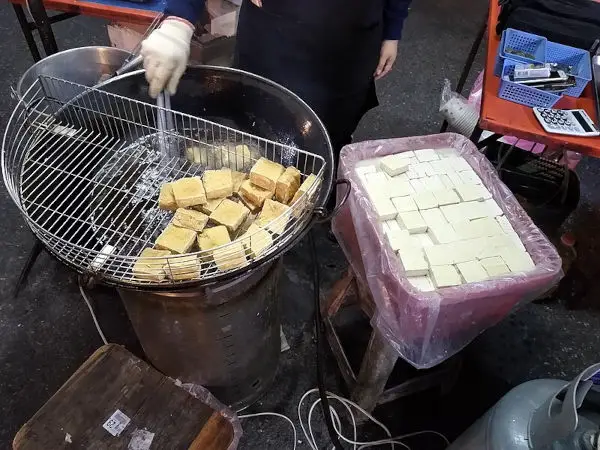
Beyond Stinky Tofu: Adventurous Street Snacks to Try
For those open to exploring new flavors and textures, Chinese street food offers many thrilling options beyond stinky tofu. Some snacks push the boundaries of the familiar, while others bring local ingredients and traditions to life. Here are a few adventurous must-tries:
- Chicken Feet (Feng Zhua): Often marinated in soy sauce, garlic, and chili, chicken feet are beloved for their chewy texture and spicy kick. Found across night markets and food stalls, they’re typically enjoyed as a snack alongside cold drinks.
- Duck Blood Soup (Yāxuè Tāng): This dish is commonly found in Nanjing and combines cubes of duck blood jelly with tofu, cilantro, and a savory broth. Though it may sound intimidating, the flavor is mellow and the texture is smooth, offering a comforting yet adventurous bite.
- Spicy Rabbit Head (Lā Zǐ Tù Tóu): Popular in Sichuan, rabbit head is served coated in a spicy chili oil blend, with diners working their way through the meat, which is both tender and flavorful. Known for its rich, spicy flavor, it’s a favorite among those who enjoy Sichuan heat.
- Century Egg (Pídàn): Known for its bold appearance with a translucent black exterior and creamy, greenish yolk, century egg is a preserved delicacy. It’s enjoyed on its own or with a side of congee for a savory breakfast or snack.
Sweet and Savory Options for Every Palate
For those looking for less daring but equally unique snacks, China’s street food has plenty of options, from rich and savory to subtly sweet.
- Tanghulu (Candied Hawthorn): A classic winter street food, tanghulu consists of skewered hawthorn berries coated in a crisp sugar shell. This treat has a delightful combination of sweet and tart flavors, with a crunchy exterior that cracks when bitten. Some modern versions use strawberries or grapes, providing a lighter twist.
- Jian Dui (Sesame Balls): These fried sesame balls are made from glutinous rice flour, creating a chewy texture with a lightly crispy outside. Filled with red bean paste or sweet lotus seed paste, they offer a comforting, mildly sweet flavor that pairs well with tea.
- Bao Bing (Shaved Ice): Originating in Taiwan, bao bing is a popular way to cool down on hot days. Shaved ice is topped with fresh fruits, condensed milk, sweet beans, and mochi. It’s a refreshing dessert, especially popular in warmer regions and night markets during summer.
- Youtiao (Chinese Fried Dough): While simple in ingredients, youtiao is a breakfast staple across China. These golden, deep-fried dough sticks are served with a side of warm soy milk for dipping. Mildly salty and savory, they make a perfect pairing with sweeter breakfast options.
- Mala Skewers: For fans of spicy and savory snacks, mala skewers are essential. Street vendors grill meat, tofu, and vegetables on skewers and coat them in a spicy, numbing blend of Sichuan peppercorns and chili. The result is a vibrant explosion of heat and flavor that keeps you coming back for more.
From crispy bites to creamy textures, the streets of China offer endless surprises for every kind of eater. There’s always something new to taste, and each snack tells a story of local traditions, unique ingredients, and a rich culinary culture that thrives on creativity.
| Snack | Region | Main Ingredients | Flavors |
| Stinky Tofu | Hunan, Taiwan | Fermented tofu, spicy sauce | Pungent, savory, sometimes spicy |
| Century Egg | Nationwide | Preserved duck egg, soy sauce | Creamy, umami |
| Fried Silk Worms | Yunnan | Silkworm larvae, soy sauce, chili | Crunchy, nutty, spicy |
| Sugar-Coated Hawthorn | Beijing | Hawthorn berries, sugar | Tart, sweet |
Related reading: Exploring China’s Culinary Diversity: China’s Regional Delicacies – Opens in new tab
Navigating Night Markets: Must-Try Treats
China’s night markets are an exciting fusion of sights, sounds, and smells, bringing together food lovers, locals, and travelers alike. Across different cities, each market has a unique character and specialties that offer an authentic taste of the region. Here’s a guide to some of China’s most renowned night markets, along with must-try local offerings.
1. Donghuamen Night Market, Beijing
Located near the Forbidden City, Donghuamen Night Market is famous for its diverse street food and slightly adventurous options. Known for its grilled scorpions, starfish, and silkworm skewers, this market attracts daring foodies ready to test their limits. Don’t miss zhajiangmian (noodles with soybean paste) and lamb skewers, which offer a taste of classic Beijing flavors.
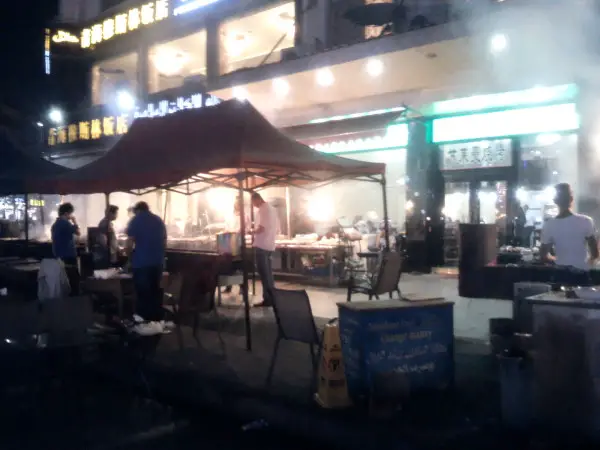
2. Shilin Night Market, Taipei
While technically located in Taiwan, Shilin Night Market is a must-mention, given Taiwan’s cultural and culinary ties with China. Known for its oversized fried chicken cutlets and bubble tea, Shilin is a bustling market perfect for snacking your way through an evening. Be sure to try oyster omelets and stinky tofu—two local specialties with loyal followings.
3. Qingping Market, Guangzhou
For those craving Cantonese flavors, Guangzhou’s Qingping Market delivers. This market is rich in fresh seafood, herbal medicine, and dried goods, along with classic dim sum options like har gow (shrimp dumplings) and siu mai. Many vendors specialize in lai fun noodles, a chewy rice noodle soup unique to the region, topped with fresh herbs and sometimes seafood.
4. Jinli Ancient Street, Chengdu
In Chengdu, Jinli Ancient Street brings the famed flavors of Sichuan cuisine to life. With the irresistible scent of chili and Sichuan peppercorn in the air, it’s an adventure for spice lovers. Try mala (numbing spicy) skewers, hot-and-sour suanla tang (soup), and dan dan mian (Sichuan noodles). Sweet options like brown sugar rice cakes also offer a soothing balance to the heat.
5. Nanjing Fuzimiao Night Market, Nanjing
Known for kaoya (Nanjing salted duck), this market near the Confucius Temple offers rich local specialties. Another unique treat is duck blood soup, a delicacy for the adventurous. Vendors here also serve baozi (steamed buns) and other traditional snacks. The scenic riverside adds to the charm, especially after sunset when lanterns illuminate the streets.
6. Muslim Quarter, Xi’an
In Xi’an, the Muslim Quarter is the place to experience Northwestern Chinese cuisine. Unique to this market is roujiamo, a crispy flatbread sandwich filled with savory, spiced beef or lamb. Another local favorite is yangrou paomo (lamb soup with crumbled flatbread), a hearty dish perfect for cooler nights. Fresh pomegranate juice and sticky rice cakes also add a sweet note to the mix.
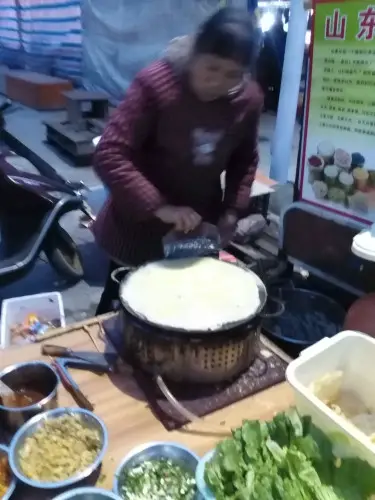
Eating Etiquette at Night Markets
Navigating China’s night markets can be a delightful experience, and a few etiquette tips will help you get the most out of your visit.
Tips for Navigating Crowded Markets
- Keep Cash Handy: While some vendors accept digital payments, cash is still widely preferred at night markets, especially in smaller stalls.
- Go Early (or Late): Arriving early can help avoid crowds, while visiting late often means vendors may be more generous with samples or discounts as they wrap up the night.
- Share and Sample: Night markets are best enjoyed by sampling a variety of small dishes. Sharing snacks with friends is a great way to taste more without getting too full.
- Clean-Up Etiquette: Most night markets have designated trash bins, so hold onto any waste or skewers until you find one. Being mindful of clean-up shows respect for vendors and the market atmosphere.
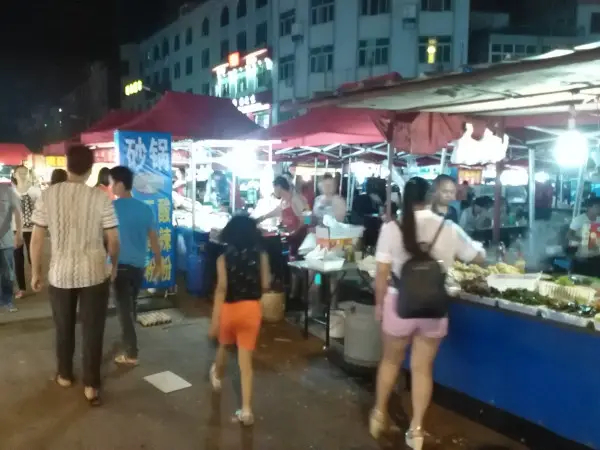
Engaging with Local Vendors and Embracing the Experience
Interacting with vendors is part of the night market experience and can make your visit even more memorable. Vendors are often proud of their specialties, so ask questions, even if through gestures or basic Chinese phrases. Trying out a few local words like “hǎo chī!” (delicious!) or “xièxiè” (thank you) can go a long way in showing appreciation. And don’t be afraid to embrace the unexpected—night markets are a perfect place to try something new, savoring each bite with a sense of adventure.
Whether you’re sampling spicy skewers, crispy dumplings, or sweet rice cakes, China’s night markets offer unforgettable culinary moments that bring together regional specialties, local traditions, and the joys of shared food culture.
| Night Market | Location | Signature Dishes | Notable Atmosphere/Features |
| Donghuamen Night Market | Beijing | Grilled scorpions, lamb skewers | Adventurous food options, historic area |
| Muslim Quarter | Xi’an | Roujiamo (meat sandwiches), lamb soup | Blend of Chinese and Middle Eastern flavors |
| Jinli Ancient Street | Chengdu | Spicy skewers, brown sugar rice cakes | Spicy aromas, traditional architecture |
| Shilin Night Market | Taipei | Giant fried chicken, stinky tofu | Famous for oversized snacks and shopping |
Related reading: Chinese Dining Etiquette and Table Manners – Opens in new tab
Final Thoughts
Chinese street food offers a culinary journey into the heart of its culture, where every bite is infused with local traditions, regional creativity, and vibrant flavors. From the crisp, savory layers of jianbing in bustling Beijing mornings to the bold aroma of stinky tofu in Hunan’s lively alleys, each dish tells a story of heritage and taste. Chinese street food encourages a spirit of curiosity, inviting travelers and locals alike to step outside their comfort zones, savoring unexpected flavors and textures.
Night markets showcase this diversity at its best, creating a sensory experience where the aroma of grilling meats, sizzling oils, and fresh herbs fills the air. Beyond the food itself, it’s the communal atmosphere, the quick exchanges with vendors, and the delight of discovering local specialties that make exploring these markets unforgettable.
For those unable to visit in person, bringing these street food traditions home—from homemade jianbing to DIY night market-style snacks—is a meaningful way to connect with China’s rich culinary landscape.
In the end, Chinese street food is more than just a meal—it’s an open invitation to experience the flavors, people, and culture of each region, one unforgettable bite at a time.
Do you want to learn more about Chinese cuisine? Check out these cooking books – Aff.link
Stay in Touch
 Join our newsletter by using the forms on this website or click here!
Join our newsletter by using the forms on this website or click here! Follow us on Google News
Follow us on Google News Follow us on Facebook
Follow us on Facebook
Featured image: Author’s photo from Yiwu night market




